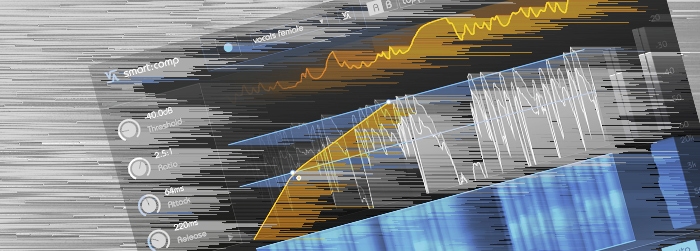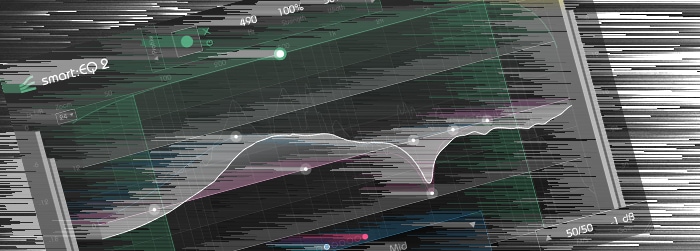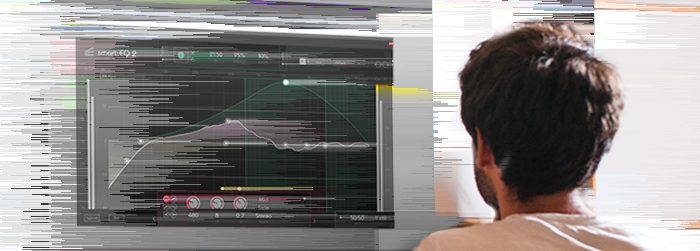Creating music is a highly creative task. Hence, the question what A.I. can actually do when it comes to the process of music production is a legitimate one. Where exactly is A.I. helpful in creating the perfect audio track and where are its limits?
Note: We replaced smart:comp with smart:comp 2! The spectro-dynamic compressor now sports sound-shaping option, an entire range of new profiles (single tracks, buses, mixes), a free-form transfer function with compression templates, states, mid/side processing, … and much more.
A.I. isn’t a universal remedy for every struggle, big or small, you are facing while sitting in front of your computer trying to create the perfect audio track. Why not? Because a lot of challenges we are confronted with are of a creative nature. The rest though is a matter of sequenced steps that every audio engineer takes in more or less the same manner in bringing audio clarity to a track.

Whether the algorithm of corrective A.I. tools for music production is based on machine learning, deep learning or another mathematical model, the goal is that it delivers a result that resembles the work of a seasoned audio engineer. As in real life, an audio engineer can correct certain issues without consulting the artist, since these issues are obvious technical problems that are almost always detected and solved in the same manner.
Take, for example, a common problem like disturbing resonances; frequencies that boom and therefore need to be toned down with an equalizer. Issues like these can either be tackled manually or with A.I. enhanced tools.
Matters such as a specific tone color, for example, require the input of the artist’s and therefore can’t be decided by any form of automatization. And sure, there are A.I. tools in music production that generate melodies, but – so far – they do not realize an individual artistic vision but rather create interesting ideas on their own.
Therefore, corrective A.I. tools can take care of time-consuming and frankly annoying repetitive and technical tasks. The time that an A.I powered plug-in takes to clean up a track is significantly less than that needed to manually work out the kinks. Working with A.I. powered plug-ins is like putting your audio tracks or mix in the hands of a good, super-fast audio engineer: They won’t end up sounding all the same and nor are at risk of losing the individuality that characterizes them; they just come out sounding clean.

Deficiencies or disturbing frequencies in a mix or audio track can be very distracting. Instead of focusing on the creative part of your work, you are often busy getting rid of them. Having a cleaned-up track gives you the freedom to unleash your creativity without having to worry about such technical issues.
Plus, A.I. enhanced tools are able to work at a level of precision that a human can’t achieve. An equalizer like smart:EQ 3 or a compressor like smart:comp establish tonal balance by working with a frequency resolution that is incredibly high.
Although smart:EQ 2 was replaced by smart:EQ 3 Here are a few examples of audio tracks with very common problems. Listen to the original tracks and how they sound after an A.I. tool has fixed them.
Both of the following guitar recordings are not ideal. The mic was placed too close to the body of the guitar which resulted in a quite boomy recording.
smart:EQ 2 mainly reduced the bass parts and increased the highs – in just a few seconds.
In this track you can hear a reversed piano, a pad and a tam tam. In the original audio material, the piano (especially the groove and the pumping) are masked by the pad.
The sidechain ducking feature of smart:comp was used on the pad track with the piano track as sidechain. The pad was moved dynamically to the background in order to make room for the piano.
One of the limits of A.I. up until now has been that a given input must have a certain level of quality. If the original material is really bad, A.I. cannot magically fix it. A.I. can improve what is technically not ideal, but if the recording is of a poor quality, there is only so much an A.I. algorithm can do. The good news is that high quality recording equipment is available today at reasonable prices.

Yes, there are limits to A.I. enhanced tools – there is no doubt about that. But they also offer remarkably interesting options for music creators. The question you need to ask yourself is, “What do I expect from an A.I. plug-in?” If you are a beginner or an ambitious bedroom producer looking for autonomy in regards to being able to fix basic problems in your recordings and mixes, you’ll find that tools like smart:comp or smart:EQ 3 will get you started quickly and help you to easily improve your audio tracks. If you are a professional in search of high-quality tools that save time and offer a high degree of precision, A.I. tools might just be the secret weapons you are looking for.